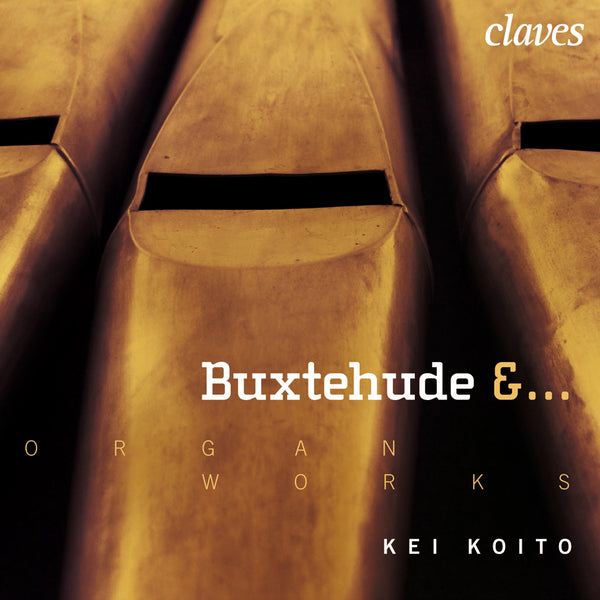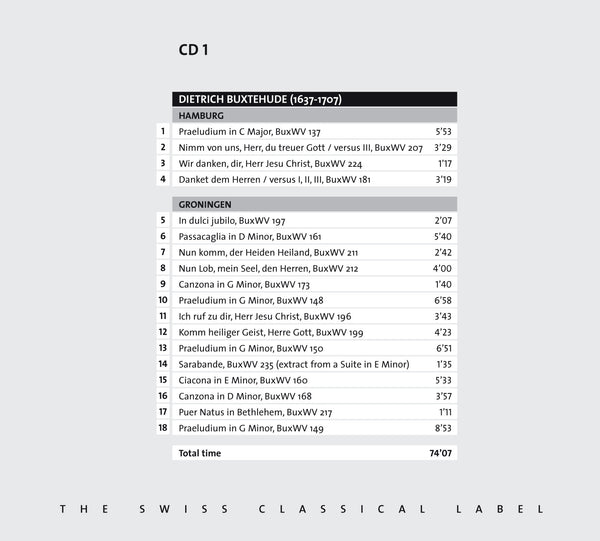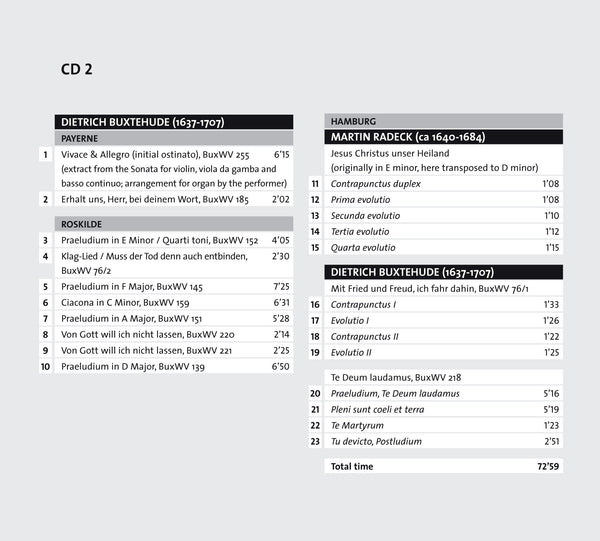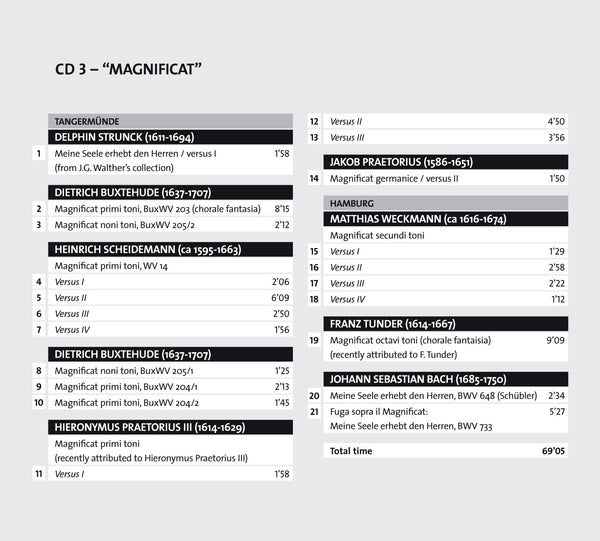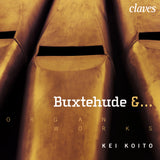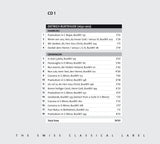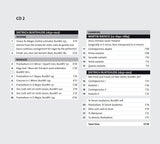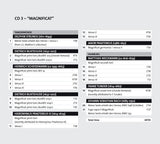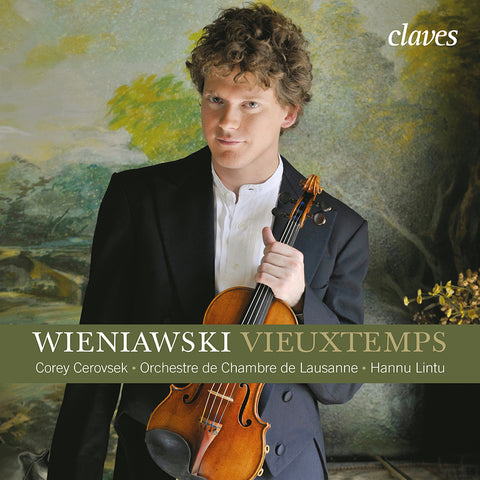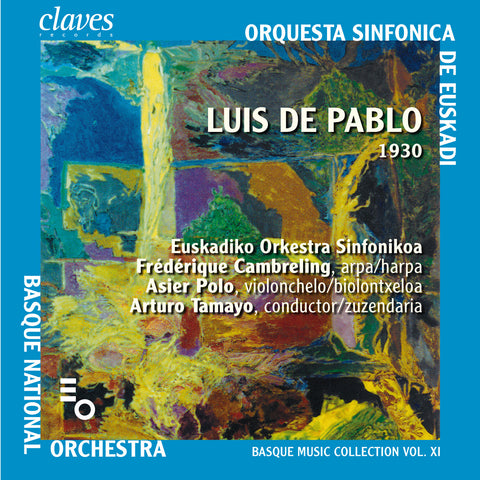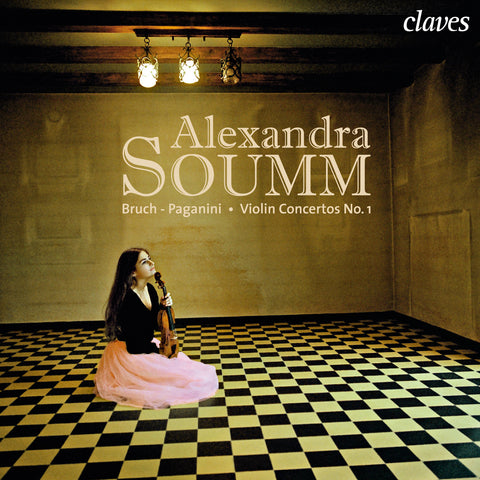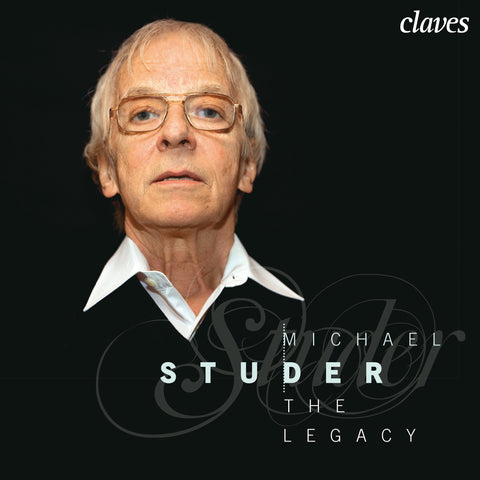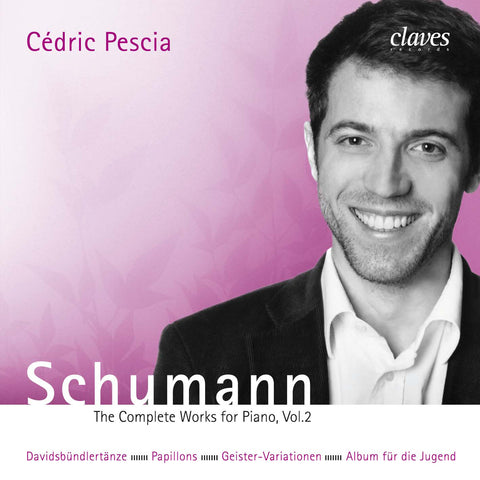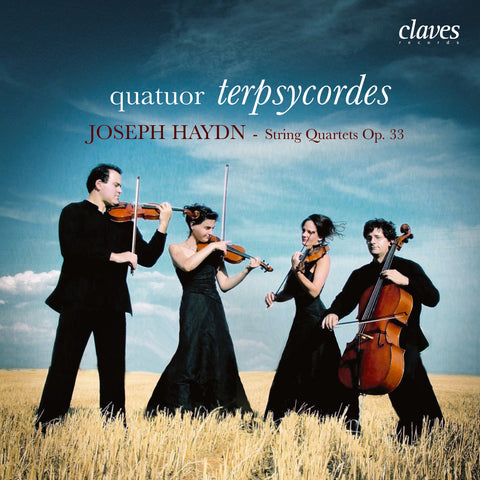(2007) Buxtehude, Radeck, Strunck, Scheidemann, H & J. Praetorius, Weckmann, Tunder & J. S. Bach: Works for Organ
Kategorie(n): Alte Musik
Instrument(e): Orgel
Hauptkomponist: Dietrich Buxtehude
CD-Set: 3
Katalog Nr.:
CD 2704-06
Freigabe: 2007
EAN/UPC: 7619931270425
- UPC: 829410441889
Dieses Album ist jetzt neu aufgelegt worden. Bestellen Sie es jetzt zum Sonderpreis vor.
CHF 35.00
Dieses Album ist nicht mehr auf CD erhältlich.
Dieses Album ist noch nicht veröffentlicht worden. Bestellen Sie es jetzt vor.
CHF 35.00
Dieses Album ist nicht mehr auf CD erhältlich.
CHF 35.00
Inklusive MwSt. für die Schweiz und die EU
Kostenloser Versand
Dieses Album ist nicht mehr auf CD erhältlich.
Inklusive MwSt. für die Schweiz und die EU
Kostenloser Versand
Dieses Album ist jetzt neu aufgelegt worden. Bestellen Sie es jetzt zum Sonderpreis vor.
CHF 35.00
Dieses Album ist nicht mehr auf CD erhältlich.
This album has not been released yet.
Pre-order it at a special price now.
CHF 35.00
Dieses Album ist nicht mehr auf CD erhältlich.
CHF 35.00
Dieses Album ist nicht mehr auf CD erhältlich.
SPOTIFY
(Verbinden Sie sich mit Ihrem Konto und aktualisieren die Seite, um das komplette Album zu hören)
BUXTEHUDE, RADECK, STRUNCK, SCHEIDEMANN, H & J. PRAETORIUS, WECKMANN, TUNDER & J. S. BACH: WORKS FOR ORGAN
Buxtehude Anthology
I have had the idea for this recording for a long time. Over the course of years the project has undergone modifications with regard to the instruments to which I am attracted. And with time a number of different editions of Buxtehude’s music have been published. The five instruments that were finally selected are very different (with regard to tuning; character; colors; acoustics; etc.) and led to a very stimulating search for choosing the right instrument for the right work. This was the case for the works in the Stylus phantasticus (in which the Italian durezze e ligature style occasionally appears); for the chorale variations that often suggest consort registrations; sometimes with echo effects; or more modest pieces such as the “simple” chorales (melody and accompaniment).
Magnificat
During the 16th and 17th centuries the Magnificat was an integral part of the office of Vespers. The order of Vespers as Luther had modified them was introduced in Hamburg in 1529. The Latin Magnificat was replaced by a German version in Hamburg in 1699 and in Lübeck in 1703. This corresponds to the golden age of North German organ music beginning with Hieronymus Praetorius I and culminating with Buxtehude. Until the appearance of Sweelinck’s students (Jacob and Johann Praetorius; Scheidemann; Schildt; Scheidt; etc.); Hieronymus Praetorius I; organist at St. Jacobi in Hamburg; was the greatest organist and composer in the Hamburg musical dynasty. He composed some 100 motets; six masses; nine magnificats for double choir and organ works. Hieronymus Praetorius I is above all known for his use of the new German-Venetian polychoral style. Hieronymus Praetorius III (Hieronymus Praetorius I’s grandson; Jacob Praetorius’ son) earns special mention; too. This child prodigy; who was a great hope (“grosse Hoffnung in musica et organis”) according to musicologist Klaus Beckmann; passed away at the age of fifteen.
“Magnificat Octavi toni”
For a long time the Magnificat Octavi toni in Scheidemann’s Magnificat collection was considered the work of an anonymous composer. Musicologist Pieter Dirksen considers this work; if the composer is really Scheidemann; “among his most ambitious compositions”. According the Klaus Beckmann; this work was not composed for liturgical use; as was also the case later for Buxtehudes Magnificats BuxWV 203 et 204/1; but for the evening concerts at the Marienkirche in Lübeck; which were organized principally by local merchants. For this reason it is more likely that this composition was composed by Tunder; Buxtehude’s predecessor at the church in Lübeck; and not by Scheidemann in Hamburg. Klaus Beckmann also emphasizes that this work is musically and historically one of the most important chorale fantasies of its time. Tunder is thus far more than merely Buxtehude’s father-in-law. “Fuga sopra il Magnificat” Carl Philipp Emanuel Bach recounted in his necrology that his father spoke with great nostalgia about the North German organs that he saw; heard and played in his youth. The influence of Buxtehude’s Magnificat is clearly to be seen in the Fuga sopra il Magnificat BWV 733; which was perhaps a sort of homage to North German composers. This composition is unique among Bach’s works not only for its style of writing but also because it is one of the few pieces by Bach that can be played on an organ with a short octave and with unequal temperament (meantone or modified meantone) and sound wonderful; creating remarkable effects in certain passages around the “Tonus peregrinus”. About the Instruments and the Repertoire The organ of the Cathedral in Roskilde has preserved a number of Gothic; Renaissance and Baroque elements. Its various colors from different periods and its mild tuning led me to chose preludes and similar works to exhibit its rich sonorous resources. For the organ in Payerne with its Baroque tuning I have tried to employ a chamber music style; for example; treating the initial ostinato from the sonata BuxWV 225 as a trio for 8’ registers. The very mild tuning of the organ at the Martinikerk in Groningen (one of the largest Schnitger organs that has been restored) is appropriate not only for “monumental” pieces but also for certain unusual combinations of registrations; for example; the introduction of the Praeludium BuxWV 149 in the form of a trio with 16’ reeds in the manuals and 32’ principals in the pedal. Buxtehude was familiar with the Rückpositiv of the Totentanz organ at the Marienkirche in Lübeck; built in 1557–58 probably by one fo the Scherers; and with the St. Aegidien organ; built by Hans Scherer in 1624–25; of which only a few original elements remain. The organ at St. Jacobi in Hamburg still has a number of registers by the Scherer family. St. Stephan in Tangermünde now possesses one of the most important instruments in Hamburg; built by Hans Scherer the younger in 1623–24; which induced me to record the most beautiful Magnificats from the Hamburg Praetorius “family”; those by Scheidemann; by Delphin Strunck and by Buxtehude in the early style. The organ was built along the aesthetic lines of the Flemish organ maker Niehoff with typical early 17th century North German sonorities; with which one can utilize certain combinations typical of the Sweelinck school (with certain registrations supposedly by Jacob Preatorius). The organ at St. Jacobi in Hamburg has a rich palette of sonorities divided over four manuals and pedals (with a 32’ reed). It is possible on this organ to employ certain combinations attributed to Scheidemann as well as certain registrations suggested by Weckann; who was also titular organist at this church. Buxtehude often went to Hamburg to take advantage of its exceptional musical atmosphere as well as to play its beautiful organs. Kei Koito (Translation: Mark Manion)
(2007) Buxtehude, Radeck, Strunck, Scheidemann, H & J. Praetorius, Weckmann, Tunder & J. S. Bach: Works for Organ - CD 2704-06
When I was a student in Tokyo; Harald Vogel; one of the great pioneers of North German organ music and historical instruments; explained to us how we should approach this world. Even though we did not have an such instruments at our disposal; he stirred our interest. When I came to study in Geneva I would go North every summer in order to become better acquainted with these instruments; to hear them and to play them. My enthusiasm and questions led the organists to show me how to handle these instruments. I was fascinated by their sonorities; the clear; transparent and yet majestic sounds. The years have passed since then; but my thirst for understanding and my passion for this music has remained as vivid and lively as the first day.
Buxtehude Anthology
I have had the idea for this recording for a long time. Over the course of years the project has undergone modifications with regard to the instruments to which I am attracted. And with time a number of different editions of Buxtehude’s music have been published. The five instruments that were finally selected are very different (with regard to tuning; character; colors; acoustics; etc.) and led to a very stimulating search for choosing the right instrument for the right work. This was the case for the works in the Stylus phantasticus (in which the Italian durezze e ligature style occasionally appears); for the chorale variations that often suggest consort registrations; sometimes with echo effects; or more modest pieces such as the “simple” chorales (melody and accompaniment).
Magnificat
During the 16th and 17th centuries the Magnificat was an integral part of the office of Vespers. The order of Vespers as Luther had modified them was introduced in Hamburg in 1529. The Latin Magnificat was replaced by a German version in Hamburg in 1699 and in Lübeck in 1703. This corresponds to the golden age of North German organ music beginning with Hieronymus Praetorius I and culminating with Buxtehude. Until the appearance of Sweelinck’s students (Jacob and Johann Praetorius; Scheidemann; Schildt; Scheidt; etc.); Hieronymus Praetorius I; organist at St. Jacobi in Hamburg; was the greatest organist and composer in the Hamburg musical dynasty. He composed some 100 motets; six masses; nine magnificats for double choir and organ works. Hieronymus Praetorius I is above all known for his use of the new German-Venetian polychoral style. Hieronymus Praetorius III (Hieronymus Praetorius I’s grandson; Jacob Praetorius’ son) earns special mention; too. This child prodigy; who was a great hope (“grosse Hoffnung in musica et organis”) according to musicologist Klaus Beckmann; passed away at the age of fifteen.
“Magnificat Octavi toni”
For a long time the Magnificat Octavi toni in Scheidemann’s Magnificat collection was considered the work of an anonymous composer. Musicologist Pieter Dirksen considers this work; if the composer is really Scheidemann; “among his most ambitious compositions”. According the Klaus Beckmann; this work was not composed for liturgical use; as was also the case later for Buxtehudes Magnificats BuxWV 203 et 204/1; but for the evening concerts at the Marienkirche in Lübeck; which were organized principally by local merchants. For this reason it is more likely that this composition was composed by Tunder; Buxtehude’s predecessor at the church in Lübeck; and not by Scheidemann in Hamburg. Klaus Beckmann also emphasizes that this work is musically and historically one of the most important chorale fantasies of its time. Tunder is thus far more than merely Buxtehude’s father-in-law.
“Fuga sopra il Magnificat”
Carl Philipp Emanuel Bach recounted in his necrology that his father spoke with great nostalgia about the North German organs that he saw; heard and played in his youth. The influence of Buxtehude’s Magnificat is clearly to be seen in the Fuga sopra il Magnificat BWV 733; which was perhaps a sort of homage to North German composers. This composition is unique among Bach’s works not only for its style of writing but also because it is one of the few pieces by Bach that can be played on an organ with a short octave and with unequal temperament (meantone or modified meantone) and sound wonderful; creating remarkable effects in certain passages around the “Tonus peregrinus”.
About the Instruments and the Repertoire
The organ of the Cathedral in Roskilde has preserved a number of Gothic; Renaissance and Baroque elements. Its various colors from different periods and its mild tuning led me to chose preludes and similar works to exhibit its rich sonorous resources.
For the organ in Payerne with its Baroque tuning I have tried to employ a chamber music style; for example; treating the initial ostinato from the sonata BuxWV 225 as a trio for 8’ registers.
The very mild tuning of the organ at the Martinikerk in Groningen (one of the largest Schnitger organs that has been restored) is appropriate not only for “monumental” pieces but also for certain unusual combinations of registrations; for example; the introduction of the Praeludium BuxWV 149 in the form of a trio with 16’ reeds in the manuals and 32’ principals in the pedal.
Buxtehude was familiar with the Rückpositiv of the Totentanz organ at the Marienkirche in Lübeck; built in 1557–58 probably by one fo the Scherers; and with the St. Aegidien organ; built by Hans Scherer in 1624–25; of which only a few original elements remain. The organ at St. Jacobi in Hamburg still has a number of registers by the Scherer family. St. Stephan in Tangermünde now possesses one of the most important instruments in Hamburg; built by Hans Scherer the younger in 1623–24; which induced me to record the most beautiful Magnificats from the Hamburg Praetorius “family”; those by Scheidemann; by Delphin Strunck and by Buxtehude in the early style. The organ was built along the aesthetic lines of the Flemish organ maker Niehoff with typical early 17th century North German sonorities; with which one can utilize certain combinations typical of the Sweelinck school (with certain registrations supposedly by Jacob Preatorius).
The organ at St. Jacobi in Hamburg has a rich palette of sonorities divided over four manuals and pedals (with a 32’ reed). It is possible on this organ to employ certain combinations attributed to Scheidemann as well as certain registrations suggested by Weckann; who was also titular organist at this church. Buxtehude often went to Hamburg to take advantage of its exceptional musical atmosphere as well as to play its beautiful organs.
Kei Koito
(Translation: Mark Manion)
Return to the album | Composer(s): Dietrich Buxtehude | Main Artist: Kei Koito







